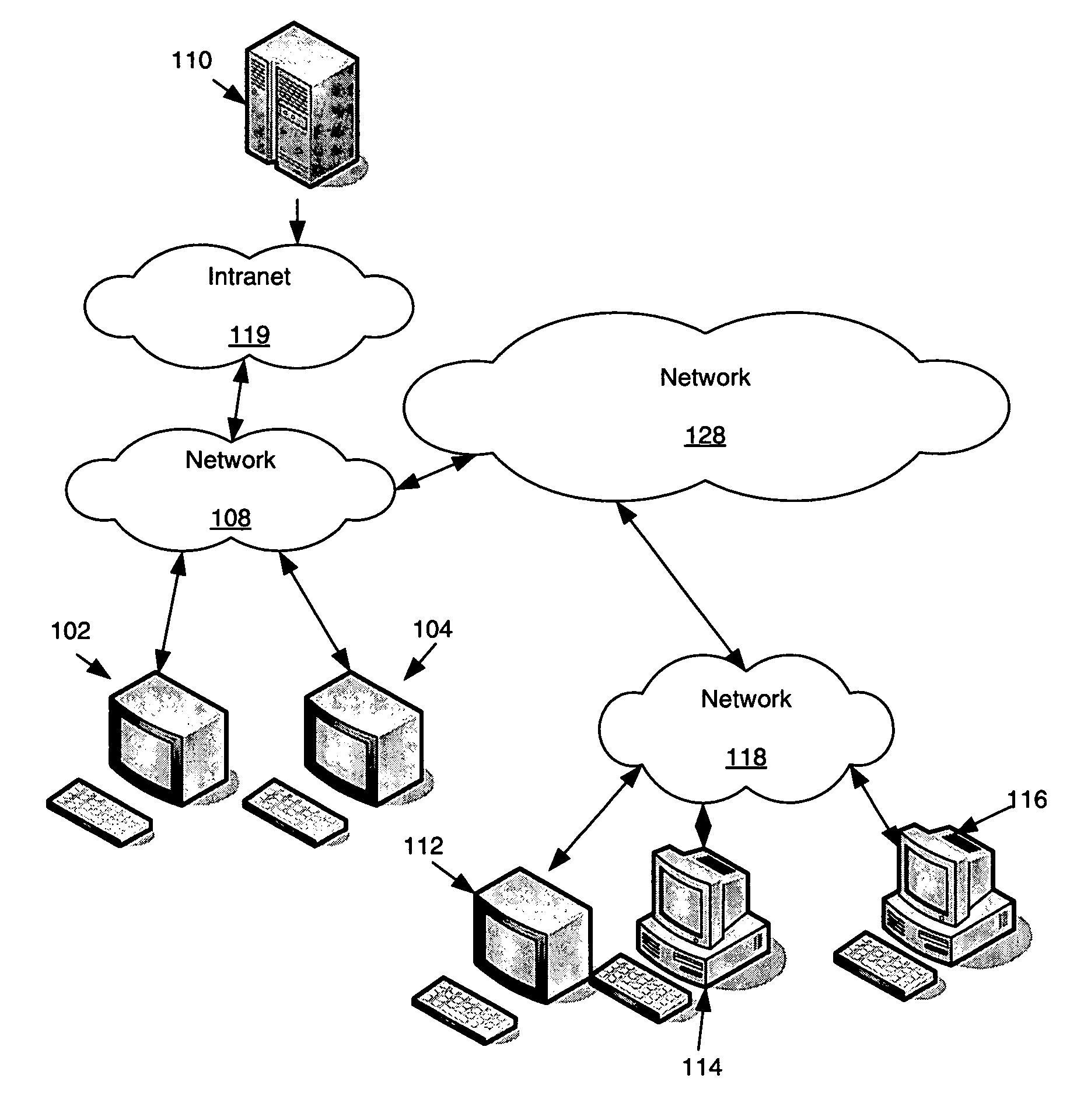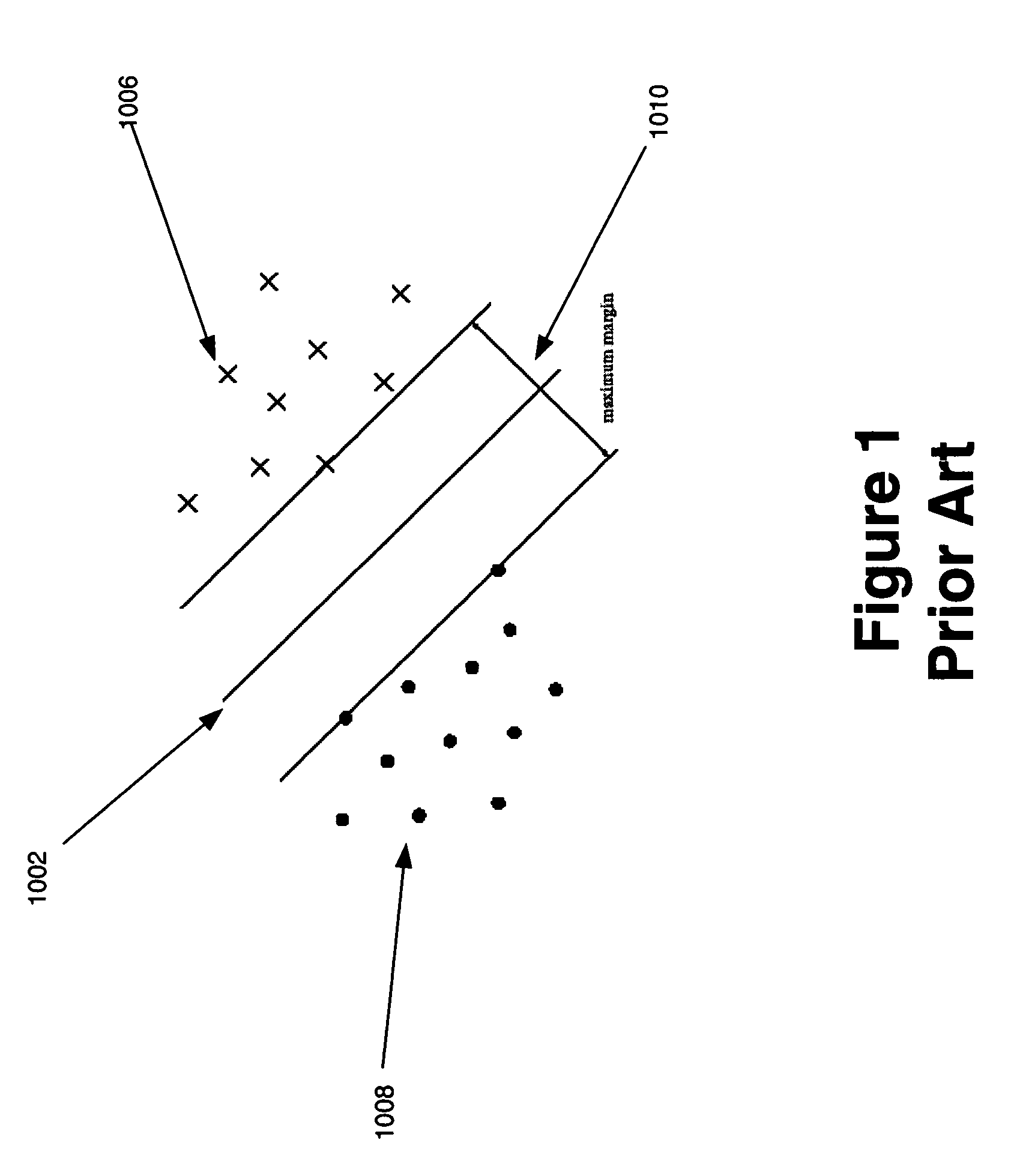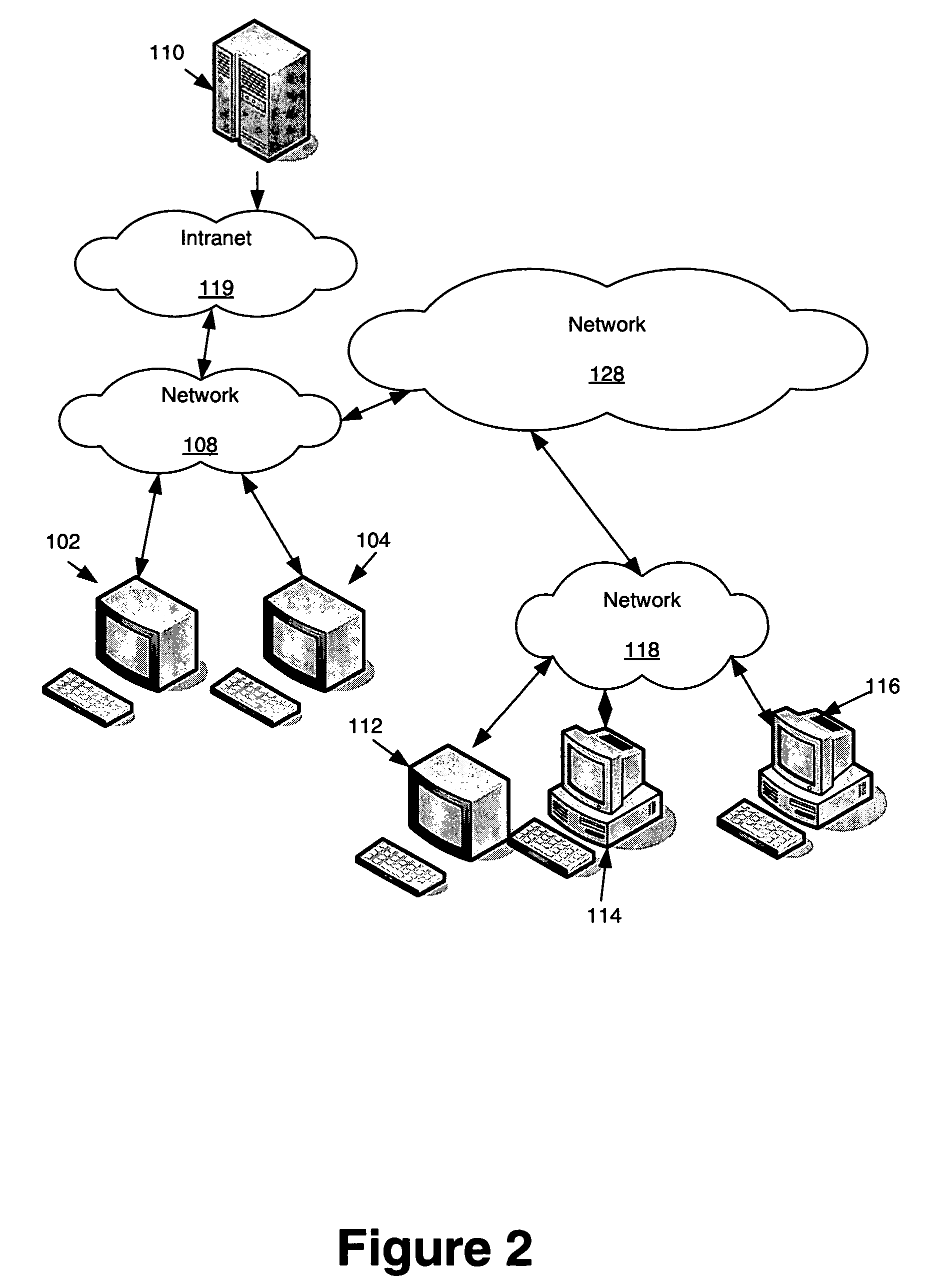Methods to distribute multi-class classification learning on several processors
a multi-class classification and processor technology, applied in the field of increasing learning speed, can solve the problems of inability to guarantee the global optimal solution of different classifiers, inability to handle the very large number of examples of computationally expensive learning algorithms, and excessive learning times, so as to achieve the effect of increasing the learning speed of large margin classifiers
- Summary
- Abstract
- Description
- Claims
- Application Information
AI Technical Summary
Benefits of technology
Problems solved by technology
Method used
Image
Examples
Embodiment Construction
Exemplary Operating Environment
[0027]FIG. 2 shows a diagram of a computer system and network that may be used to implement aspects of the invention. A plurality of computers, such as workstations 102 and 104, may be coupled to a computer 112, via a network 108, 128, and 118. Computers 112, 114, and 116 may be coupled to a network 128 through network 118. Computers 112, 114, and 116, along with workstations 102 and 104 may be used for the splitting of program execution among many CPUs. Those skilled in the art will realize that other special purpose and / or general purpose computer devices may also be connected to other various networks, such as the Intranet 119, and used for parallelization. Such additional devices may include handheld devices, multiprocessor systems, microprocessor-based or programmable consumer electronics, networked PCs, minicomputers, mainframe computers, and the like.
[0028]One or more of the computers and terminals shown in FIG. 2 may include a variety of interf...
PUM
 Login to View More
Login to View More Abstract
Description
Claims
Application Information
 Login to View More
Login to View More - R&D
- Intellectual Property
- Life Sciences
- Materials
- Tech Scout
- Unparalleled Data Quality
- Higher Quality Content
- 60% Fewer Hallucinations
Browse by: Latest US Patents, China's latest patents, Technical Efficacy Thesaurus, Application Domain, Technology Topic, Popular Technical Reports.
© 2025 PatSnap. All rights reserved.Legal|Privacy policy|Modern Slavery Act Transparency Statement|Sitemap|About US| Contact US: help@patsnap.com



